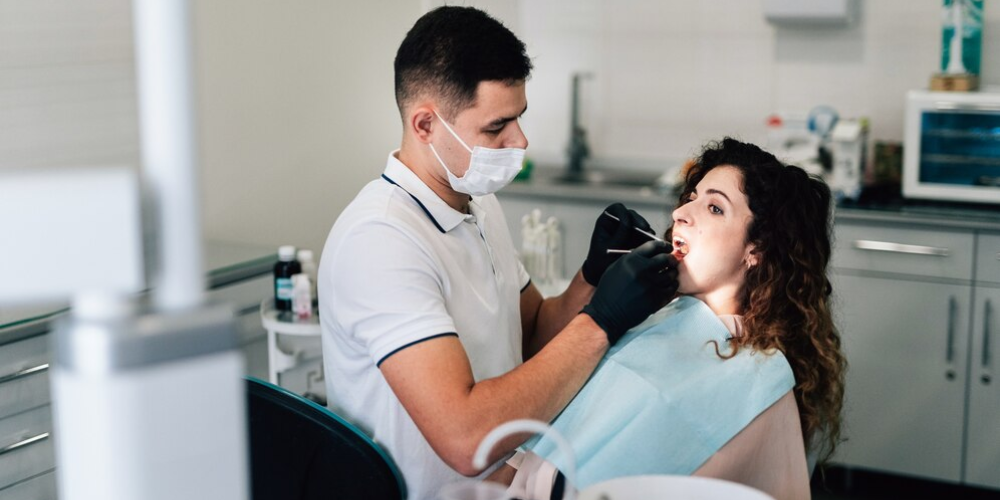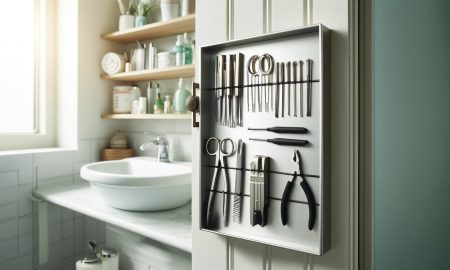
How to Fix a Broken Tooth? Essential Procedures and Care

Breaking or chipping a tooth can be alarming, but it’s often manageable with prompt dental care. If a tooth is chipped, cracked, or broken, the most important thing is to address the situation quickly and effectively. Understanding how to fix a broken tooth and knowing the steps to take can help mitigate pain and restore dental health.
This guide will cover essential actions to take and the treatments available to ensure a smooth recovery.
When a tooth is chipped, broken, or cracked, the first thing to remember is not to panic. While this type of injury is often not severe, prompt action can help minimize discomfort and preserve the tooth.

Freepik | Avoid chewing on the affected side and stay away from hot or cold foods that may cause pain.
What to Do Right Away
- Preserve the Broken Piece – If a chunk of your tooth has broken off, place it in a container of milk or saliva. This helps keep the tooth fragment viable until you can get to the dentist.
- Avoid Painful Foods – Until you can see a dentist, avoid chewing on the affected side and steer clear of very hot or cold foods that might cause discomfort.
- Contact a Dentist – If you have a regular dentist, call their office immediately. If they’re closed, their voicemail should provide instructions for emergencies.
If you’re without a dentist or unable to secure an emergency appointment, dial 111 for advice. In urgent situations, finding a local dentist willing to see you on short notice is essential. Note that there may be a charge for urgent consultations.
Professional Dental Care
Seeing a dentist is the best way to determine the appropriate treatment for a broken tooth. Depending on the severity of the damage, several procedures might be recommended.
Common Treatments for a Broken Tooth
- Bonding – For minor chips or cracks, the dentist might apply a tooth-colored resin to restore the tooth’s appearance and function.
- Fillings – If a significant portion of the tooth is missing, a dental filling might be used to fill in the gap and restore normal function.
- Crowns – For more severe damage, a crown—a cap that fits over the tooth—might be necessary to protect and strengthen the remaining tooth structure.
- Root Canal Treatment – If the damage is extensive and the tooth’s nerves are exposed, a root canal may be required to treat the infection and preserve the tooth.
Long-Term Care and Prevention

Freepik | Regular brushing and flossing keep your teeth and gums healthy.
After your broken tooth is treated, maintaining good oral hygiene is crucial to prevent further issues. Here are some tips for long-term care:
- Brush and Floss Regularly – Proper brushing and flossing help keep your teeth and gums healthy, reducing the risk of additional damage.
- Avoid Hard Foods – Be cautious with foods that could potentially chip or crack your teeth, such as hard candies or ice.
- Wear a Mouthguard – If you participate in sports or activities that pose a risk to your teeth, consider wearing a mouthguard to protect against future injuries.
Knowing how to fix a broken tooth involves understanding both immediate and long-term care strategies. Prompt action, proper treatment, and preventive measures can ensure that your teeth stay healthy and functional.
Whether you need to manage a minor chip or a more significant break, taking these steps can help you address the issue effectively and avoid further complications. Always seek professional dental advice to ensure the best outcome for your dental health.
More in Life Hacks
-
`
20 Silly Old-people Jokes That Will Make Your Aging Funnier
Aging is inevitable. But that doesn’t mean it can’t laugh. Embracing the lighter side of getting older can make the journey...
June 5, 2024 -
`
Hotel Worker Strike at Virgin Hotels Las Vegas Ends, Negotiations Resume
Nevada’s largest labor union, the Culinary Union Local 226, has emerged victorious after a strategic 48-hour hotel worker strike at Virgin...
May 29, 2024 -
`
Everything You Need to Know About Kevin Hart’s Parents
Kevin Hart, one of today’s most prominent comedians, has a story rooted in humble beginnings and profound family influence. Born the...
May 21, 2024 -
`
6 Compelling Reasons Why You Should Drive Slower At Night
Driving at night might offer the solace of quiet roads and a cooler breeze, but it also brings a unique set...
May 17, 2024 -
`
Is Tipping Your Plumber Expected or Appropriate? Some General Tipping Guidelines
Do you tip plumbers? It is a question many of us find ourselves pondering after a job well done. Tipping culture...
May 11, 2024 -
`
Florida Woman Jailed for One Month Over Ashley Biden’s Diary Theft
In a case that caught the nation’s attention, the story of the theft of Ashley Biden’s diary unfolded like a gripping...
April 30, 2024 -
`
Are Ryan Palmer & Arnold Palmer Related?
Is Ryan Palmer related to Arnold Palmer? This question has intrigued many fans of professional golf, given the shared last name...
April 23, 2024 -
`
10 Easy Home Hacks That Will Make Your Life Much Easier Than You Might Think
Using Mason Jars For Storage is One of the Most Creative Home Hacks! Kicking off our list of home hacks, let’s...
April 16, 2024 -
`
Donald Trump Legal News: Are the Biggest Legal Challenges Yet to Come?
In the whirlwind world of Donald Trump legal news, the former U.S. President is bracing for what could be one of...
April 1, 2024















You must be logged in to post a comment Login